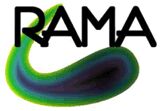
|
RAMA |
|
Risk Analysis of Marine Activities in the Belgian part of the North Sea |
| ||
|
| ||
 |
|
|
| home | background | objectives | results | report | partners | users committee |
The Belgian Part of the North Sea is an intensely used marine area. It is a rather small part of the southern North Sea but nevertheless it contains one of the most intensive merchant shipping routes in the world. Besides shipping it is also used for a wide and increasing variety of human activities.All these human activities are posing a certain danger to the environment. However, the frequency of incidents with environmental damage and the severity of these are only poorly known or not known at all.
Recent accidents in European waters (eg. Prestige, Tricolor, Fui Shan Hai, Erika, Braer, Sea Empress,…) have shown that policy makers are confronted with the occurrence of incidents that do severely damage the environment. They have also clearly illustrated that environmental impacts happen irrespectively of national borders.
The interest and engagement of society to improve the quality of the sea and the coast and to protect the marine environment has lead at national and international level to increased attention. This is shown among others by recent changes in the EU legislation and steps taken by the EC to speed up enforcement of the ERIKA regulations. It also shows from points in the Bergen declaration of the 5th North Sea Conference in which the Ministers invited OSPAR to develop an appropriate system of risk assessment and risk profiles connected with relevant human activities (e.g. shipping and aquaculture) in particular regions and localities. Besides this, they also pointed toward the importance of risk reduction relating to hazardous substances.
Similar importance is found in EC environmental policy documents where increased attention is demanded for protection of the marine environment (communication of the European Commission to the European Parliament and Council of Ministers "Towards a strategy to protect and conserve the marine environment" -COM (2002) 539.). It also shows from e.g. the OSPAR goals, which include the need for (among others) "protection and conservation of the maritime area against adverse effects of offshore activities" and give guidance for the "selection of areas and sites which need to be protected from offshore activities due to their inherent sensitivity and the risks which such activities may pose".
To be able to keep the risk (the product of probability and impact) of unwanted incidents as low as reasonably feasible and/or acceptable, appropriate measures, both technical and organisational, need to be defined and taken. However, such preventative and mitigating measures can only be taken on the basis of a sound analysis of the risks involved.
Therefore, the main goal of RAMA is to carry out a risk analysis of all relevant and credible incidents of commercial shipping with environmental damage to the Belgian part of the sea, the coast or the beaches due to human activities. The results of this risk analysis will be used as a basis for examination of the appropriateness of the Belgian 'North Sea Disaster Plan' and proposals for improvement will be worked out.
The current proposal will take advantage of experience gathered by the project partners during other projects in which they were active, and that were financed by the Federal Science Policy Office (FSPO). These include primarily GAUFRE and MARE-DASM as well as current and previous research programs for Sustainable Development.
The project is also part of the MIMAC cluster, where synergy with the project DIMAS is pursued.
|
General coordination: Bart De Wachter Web site and databases hosted by VLIZ |